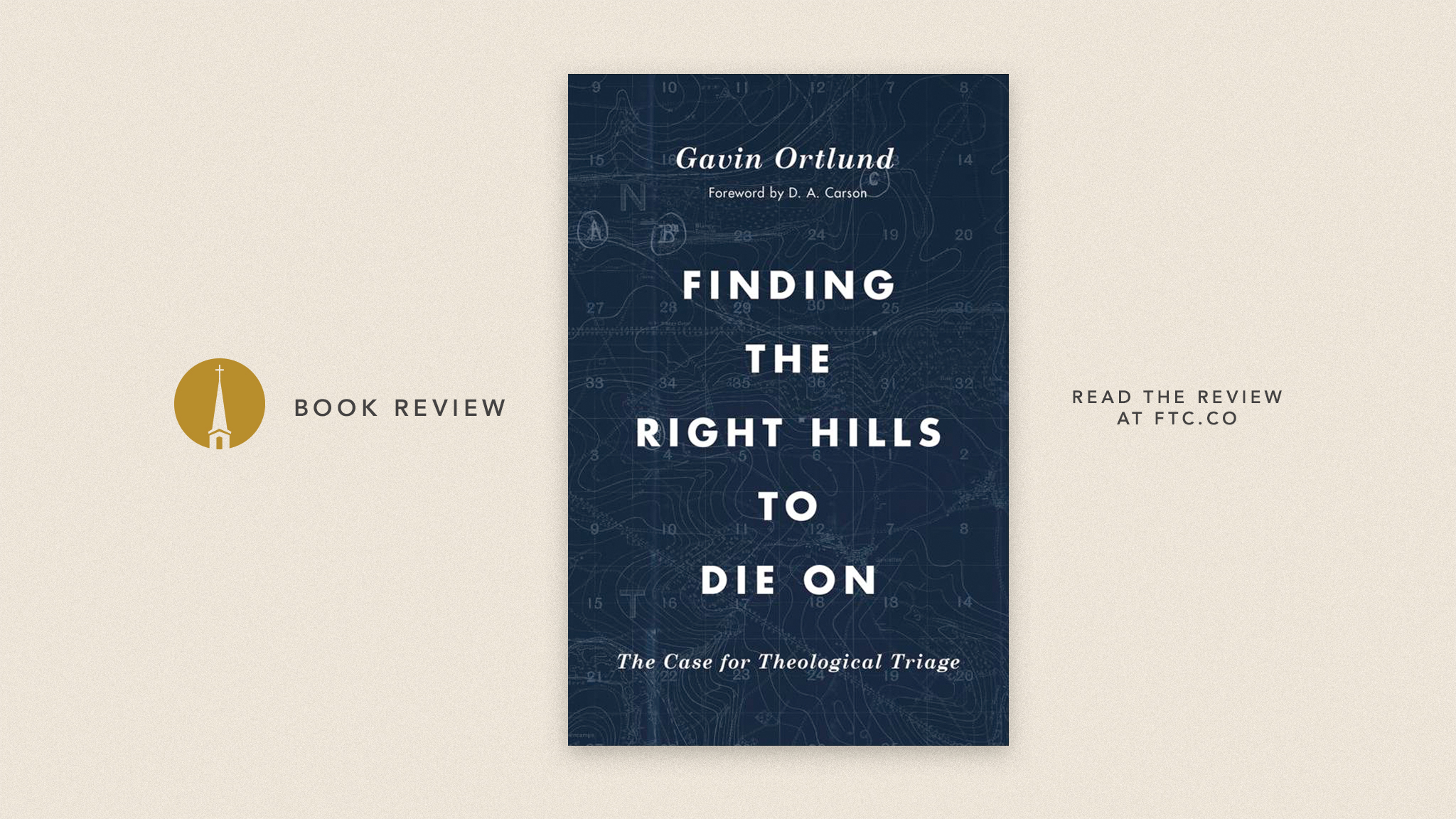
Gavin Ortlund wants to make you a better boxer—or at least help you pick better fights.
He opens his book with an observation about fighting: “It is easy to lose your balance when you’re standing on one foot. The strongest posture is one of balance between both feet: one of poise. That’s why boxers put so much care into their footwork.”[1]
Perhaps no other phrase embodies the task of Ortlund’s Finding the Right Hills to Die On than that of “theological poise,” and because of this, I think this little book needs to be bumped up to the top of your reading list. If it hasn’t come for your church yet, it’s likely on the way: doctrinal division lurks around the corner, and you’d be well-served to equip yourself with theological poise. Ortlund helps us do so.
A Tale of Two Impulses: Sectarianism and Minimalism
Finding the Right Hills to Die On begins with a section discussing the dangers of what Ortlund calls “sectarianism” and “minimalism.” Don’t get caught up in the vocabulary. What is suggested here is simple: doctrine is something we should divide over when appropriate; however, the church’s foundational call is to unity and peace with one another, secured by the blood of Christ. We should avoid both unnecessary division and unnecessary indifference.
Though a wide survey of healthy churches may find strong disagreements, “our love of theology should never exceed our love of real people, and therefore we must learn to love people amid our theological disagreements.”[2] Even in instances where healthy disagreement occurs, we must remember that our primary interlocutors are not flesh and blood but the cosmic powers over this present darkness, as Paul writes in Ephesians 6.
Again, it’s about poise. Avoiding sectarianism and minimalism is not about avoiding disagreements altogether—it’s about understanding when and how we ought to disagree.
But if only some hills are worth dying on, how can we know we’ve chosen the right ones?
Theological Triage: How to Know When to Pick Fights
To help you train, Ortlund uses the increasingly common framework of “theological triage” to prioritize doctrinal concerns. (In the same way a field doctor must use triage to determine the urgency of injuries sustained in war, Ortlund says we can use theological triage to determine the urgency and importance of a given doctrinal issue.)
His version of this framework includes three tiers of doctrinal concerns, appropriately titled primary, secondary, and tertiary. Concisely, he defines them like so:
- Primary doctrines: those doctrines that, when knowingly and persistently denied, raise considerable concerns about one’s salvation
- Secondary doctrines: those doctrines that “make a noticeable difference in how we understand and articulate the gospel, though their denial does not generally constitute a denial of the gospel”[3]
- Tertiary doctrines: those doctrines over which we should not divide at any level
This tiered system aids us in navigating how and when we ought to divide, and it does so with relative neatness: primary doctrines are always worth dividing over, secondary doctrines are typically worth dividing over on a local church level, and tertiary doctrines are never worth dividing over.
While I admit a newcomer to this kind of theological framework might struggle to understand where they ought to place a particular doctrinal topic, I think the helpfulness of these categories mitigates any confusion that may happen within each rank. In fact, considerable wiggle room can be given within each level of this taxonomy (especially the secondary and tertiary levels).
For example, Ortlund helpfully points out that some second-tier doctrines are more urgent or consequential than others; not all secondary issues are “equally secondary.” Likewise, second-tier doctrines are often marked by a gospel-vitality that can be undermined if we seek to treat them with indifference: the sovereignty of God in salvation, how sacraments are administered, and other theological topics tend can richly inform our worldviews and communicate much about our conception of the gospel.
A bulk of the book is dedicated to “performing” theological triage—particularly in the chapters dedicated to second-and-third-rank issues. Drawing on his journey through various theological positions, Ortlund models what it means to define the faith from a posture of humility.
Who should read this?
One of the most impressive traits of the book is its accessibility. There are a host of other great books on doctrinal division that have come out lately—Putman’s When Doctrine Divides the People of God comes to mind. Still, Finding the Right Hills to Die On is practical in a way some of those other works have not demonstrated themselves to be.
This is a book that I want to get in the hands of every church member because it is the backbone of what we need in 2021: church unity. In an era marked by division, derision, political strife, and theological uppercuts, Finding the Right Hills to Die On reminds us that it’s okay to step out of the boxing ring sometimes.
And, I think Ortlund would agree: oftentimes, it’s best if we do so.
[1] Gavin Ortlund, Finding the Right Hills to Die On: A Case for Theological Triage (Wheaton: Crossway, 2020), 27.
[2] Ibid., 36.
[3] Ibid., 95.

